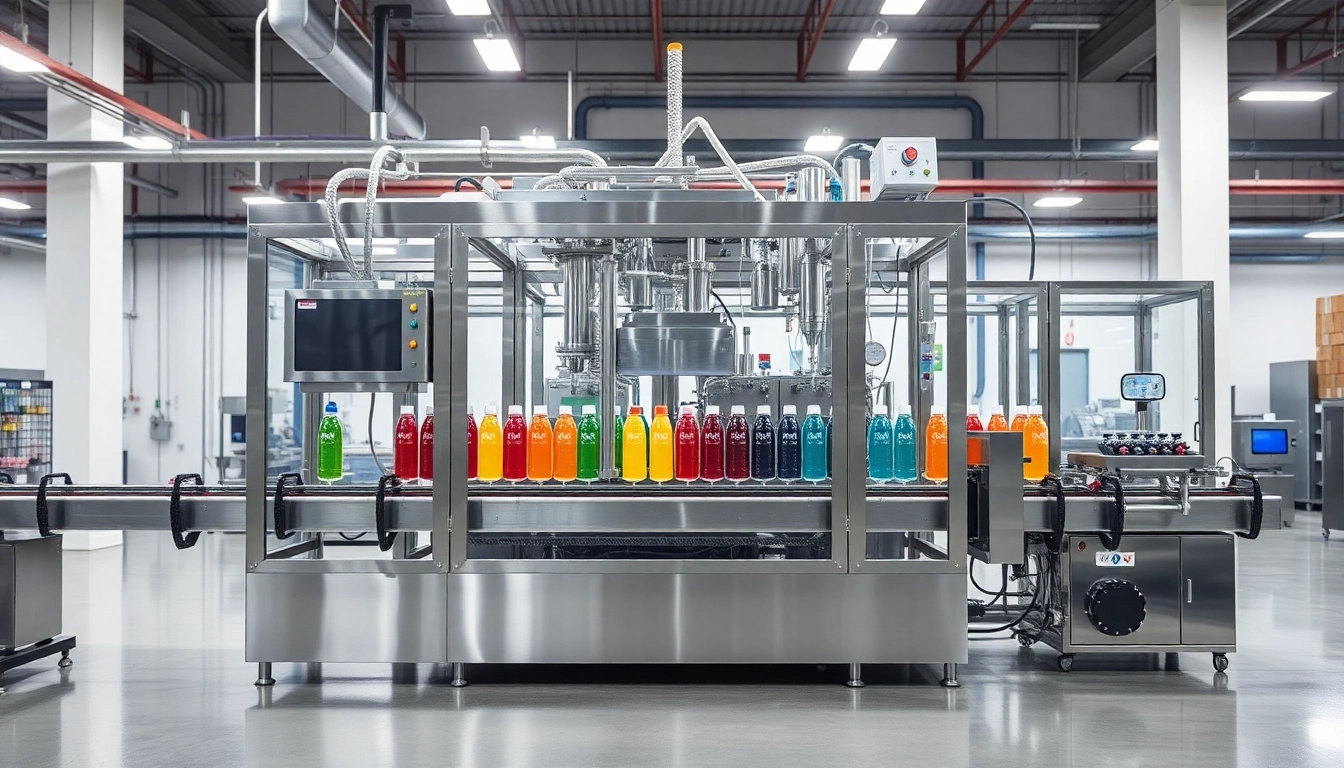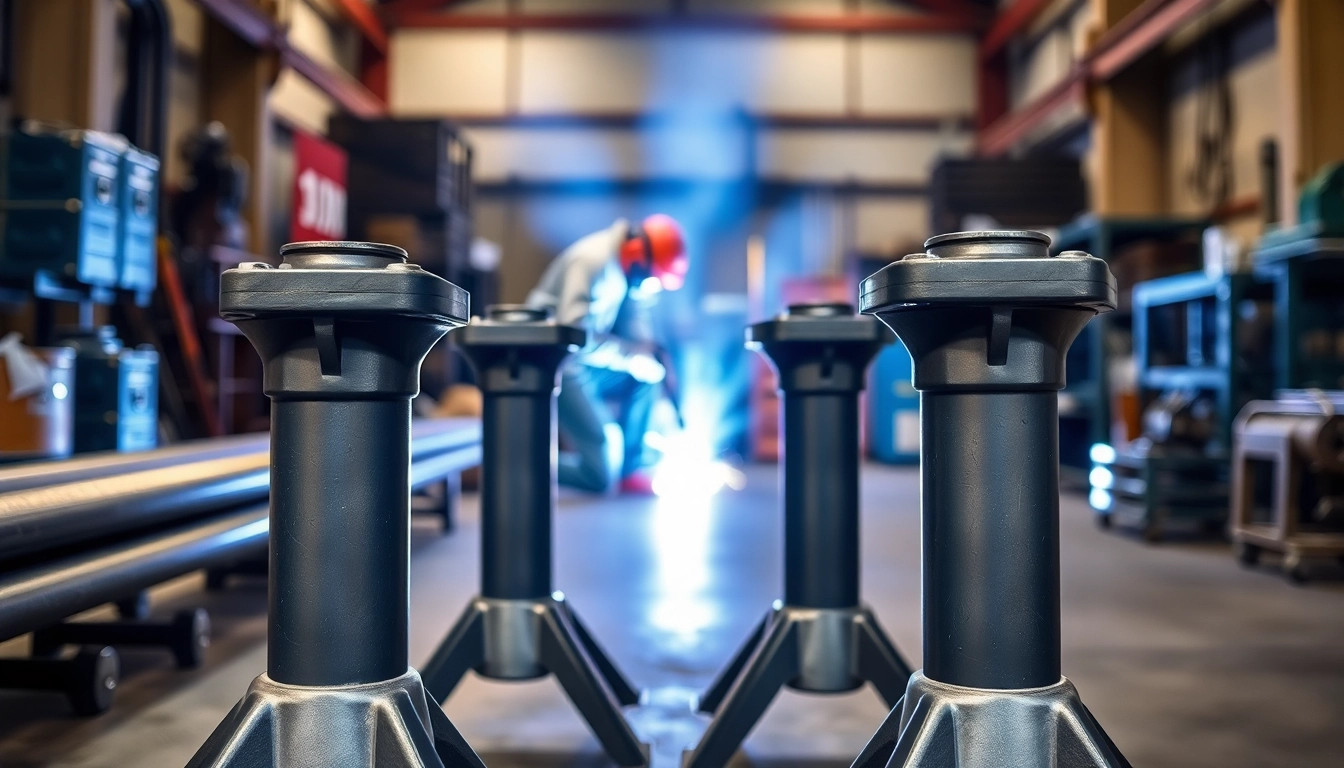Understanding Pipe Stress Analysis
What is Pipe Stress Analysis?
Pipe stress analysis is a critical engineering process that evaluates the structural integrity of piping systems in various industries. It involves the examination of how piping materials respond to different loads, including thermal expansion, seismic activity, and internal or external pressures. This analysis is essential for ensuring safety, performance, and reliability in pipeline operations. In essence, it identifies areas where stresses could lead to potential failures, allowing engineers to design and implement effective mitigation strategies.
Importance and Applications in Engineering
The significance of pipe stress analysis cannot be understated, particularly in industries such as oil and gas, petrochemicals, power generation, and water treatment. By conducting thorough analyses, engineering teams can prevent disasters that may arise from pipe failures, such as leaks, ruptures, or even catastrophic explosions. Applications include:
- Design Validation: Ensuring new piping systems meet operational demands.
- Maintenance Decisions: Evaluating existing systems to prioritize upkeep and replacement.
- Crisis Management: Analyzing scenarios post-failure to inform future designs.
Pipe stress analysis thus acts as a cornerstone of structural efficiency and safety, making it an indispensable service from a pipe stress analysis company.
Key Concepts and Terminology
Understanding pipe stress analysis involves familiarity with certain key concepts and terminology. Some of the most relevant terms include:
- Stress: The internal resistance of a material to deformation.
- Load: The forces acting on a piping system, including dead weight, live load, thermal, and dynamic loads.
- Flexibility: The ability of a pipe to bend without permanent deformation, which significantly influences stress levels.
- Supports: Structural elements that hold the piping in place and influence its response to loading.
Having a firm grasp of these concepts enables engineers to conduct effective analyses and apply suitable design remedies to mitigate stress-induced issues.
Methods of Pipe Stress Analysis
Traditional vs. Modern Techniques
Pipe stress analysis techniques have evolved significantly over the years. Traditional methods often relied on simplified calculations based on established engineering formulas. These methods, while effective for basic designs, lacked the ability to address the complexities of modern piping systems.
Modern techniques, on the other hand, embrace advanced modeling and simulation tools that provide comprehensive insights into pipeline behavior. Finite Element Analysis (FEA) software has become especially prevalent, enabling engineers to simulate various loading conditions and predict material responses with remarkable precision.
In comparing these two methodologies, it is evident that modern techniques significantly improve accuracy and reliability, ensuring that systems not only meet compliance standards but also operate efficiently in real-world conditions.
Software Tools for Effective Analysis
The rise of sophisticated software tools has revolutionized pipe stress analysis. Programs such as CAEPIPE, AutoPIPE, and PIPE-FLO provide engineers with user-friendly interfaces and powerful computational capabilities. These tools allow for:
- Scenario Simulation: Engineers can replicate diverse loading conditions to determine potential weaknesses.
- Real-time Analysis: Instant feedback during the design phase enables quick adjustments and optimizations.
- Integrated Reporting: Detailed documentation supporting analysis and compliance requirements.
Adopting these software tools is essential for pipeline professionals looking to deliver robust and reliable engineering solutions.
Case Studies and Real-World Examples
Several case studies underscore the critical role of pipe stress analysis in various industries. For instance, consider a major chemical plant that faced operational interruptions due to a pipe rupturing. A post-failure investigation revealed that inadequate flexibility analysis led to excessive stress concentrations that exceeded material limits.
Following this incident, the plant’s engineers implemented comprehensive stress analyses using advanced FEA tools. They identified stress hotspots and optimized their support configurations, which vastly improved the plant’s operational stability and safety. The lessons learned from this failure have since been integrated into the company’s design protocols, serving as a powerful example of how effective analysis can prevent future issues.
Challenges in Pipe Stress Analysis
Common Misconceptions
Despite its importance, there are several common misconceptions about pipe stress analysis that can lead to detrimental outcomes. One frequent belief is that stress analysis is solely a ‘one-time’ process, disregarding the need for ongoing assessments as systems evolve or undergo maintenance. This misconception can result in recognizing potential vulnerability only after a failure occurs.
Another misconception is the assumption that compliance with regulatory guidelines guarantees system safety. While guidelines provide a framework, they cannot replace thorough analyses tailored to specific systems.
Addressing these misconceptions through education and ongoing professional development is essential to foster a culture of proactive engineering practices.
Regulatory and Compliance Issues
Navigating the complex landscape of regulatory and compliance standards can pose challenges. Different industries and geographical regions may have distinct regulations governing pipe stress designs. Compliance not only mandates adherence to safety but also influences costs and project timelines.
Staying informed regarding local, national, and international codes—such as ASME, API, and ISO standards—is essential for engineers involved in pipe systems. Utilizing guidelines from professional organizations can help streamline compliance and reduce the likelihood of oversight.
Strategies for Overcoming Analysis Challenges
To overcome challenges in pipe stress analysis, organizations can implement several strategies:
- Education and Training: Encouraging continual learning among engineering teams ensures adaptability to new technologies and methodologies.
- Collaboration: Foster collaboration across disciplines to enhance holistic system understanding and problem-solving capabilities.
- Regular Reviews: Schedule periodic reviews of existing analyses to incorporate lessons learned and industry advancements.
By proactively addressing these challenges, companies can enhance their operational resilience and safety.
Best Practices for Effective Pipe Stress Analysis
Conducting Comprehensive Assessments
Effective pipe stress analysis begins with comprehensive assessments that consider all relevant variables. This includes evaluating material specifications, operating conditions, and environmental factors. In-depth assessments might involve:
- Load Analysis: Assessing expected operational, thermal, and dynamic loads accurately.
- Material Properties: Incorporating precise material data helps in predicting the behavior of pipes under various stresses.
- Design Configuration: Reviewing original design motives and current applications to ensure alignment with operational needs.
A thorough evaluation at the outset significantly enhances long-term performance and safety margins.
Interpreting Analysis Results Accurately
Accurate interpretation of analysis results is critical for effective decision-making. Engineers should be adept at correlating simulation data with physical conditions and identifying potential discrepancies. This requires a deep understanding of factors influencing stress and flexibility, including:
- Environmental Influences: Recognizing the role that temperature shifts and external loads play on pipeline behavior.
- Support Structures: Understanding how support configurations impact stress distribution is vital.
- Dynamic Behavior: Assessing how vibrations and transient loads influence real-time performance.
With an accurate reading of results, engineers can make informed design adjustments and operating recommendations.
Continuous Improvement in Analysis Techniques
Just as the tools and methodologies for pipe stress analysis have evolved, so too should the techniques utilized by engineers. Continuous improvement can be realized through:
- Feedback Loops: Instituting processes to gather insights post-project that inform future analyses.
- Peer Reviews: Engaging in collaborative reviews with cross-functional teams to identify areas for enhancement.
- Research and Development: Investing in R&D to stay ahead of emerging technologies in materials science and analysis techniques.
A commitment to continuous improvement fosters innovation and efficiency, ensuring long-term success in pipe stress analysis practices.
The Future of Pipe Stress Analysis
Emerging Trends and Technologies
The future of pipe stress analysis is poised to be shaped by several emerging trends and technologies. Advancements in machine learning and artificial intelligence promise to enhance predictive capabilities, allowing for simulations that can identify vulnerabilities before they are realized. Additionally, the integration of Internet of Things (IoT) technology with real-time monitoring can provide continuous data streams, improving responsiveness to changing operational conditions.
Furthermore, cloud-based analysis platforms offer unprecedented collaboration opportunities, allowing teams to work on complex projects simultaneously, regardless of location.
Impact of Industry 4.0 on Analysis
Industry 4.0 heralds a new era of interconnected systems and digitization, significantly impacting pipe stress analysis. With more data available than ever, companies can leverage analytics to inform decisions, optimize designs, and predict the long-term performance of piping networks. This transformation encourages a shift from reactive problem-solving to proactive management, ensuring that potential issues are anticipated and addressed beforehand.
Preparing for Future Challenges in Engineering
As technology advances and industry standards evolve, engineering teams must remain vigilant in preparing for future challenges. This includes fostering adaptability in design techniques, increasing multidisciplinary collaborations, and maintaining a focus on sustainability and efficiency. Sustaining a culture of continuous learning and improvement will be key to thriving in the face of future demands.
Ultimately, pipe stress analysis will continue to serve as a critical function in preserving the safety and performance of piping systems across industries, underlined by an unwavering commitment to safety, a robust understanding of emerging trends, and an agile approach to engineering challenges.



